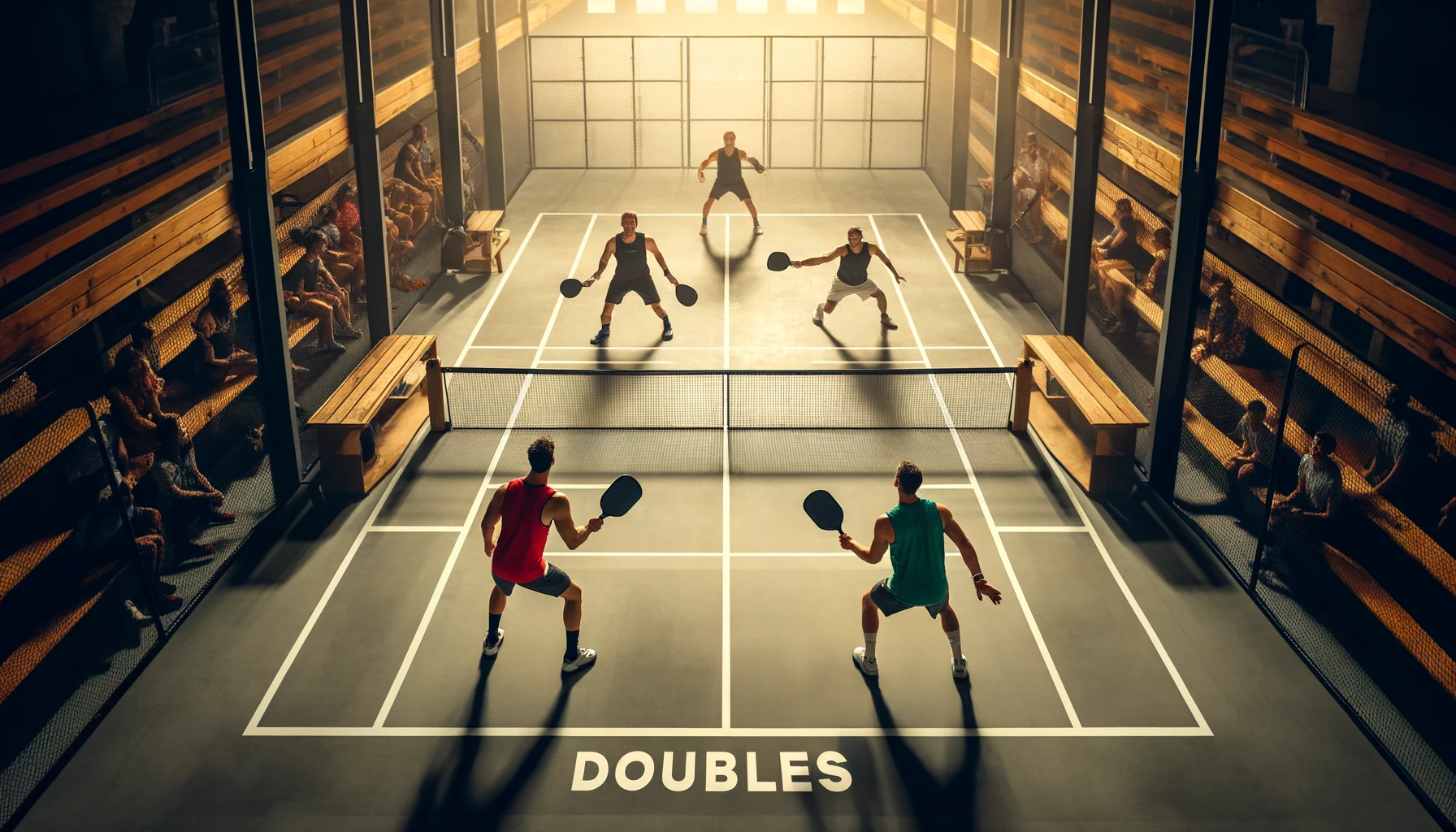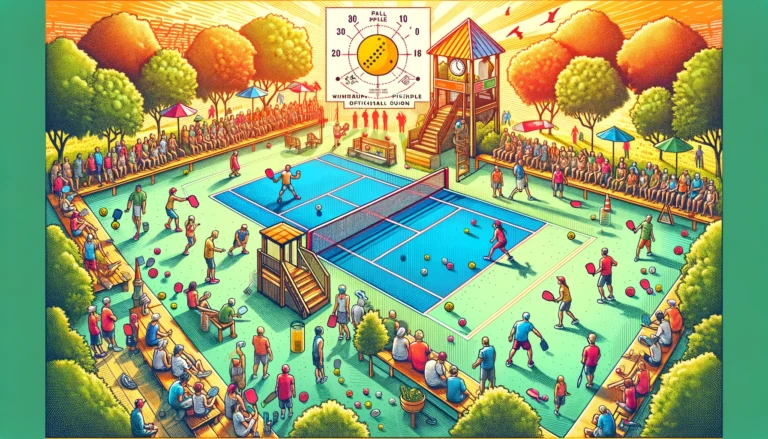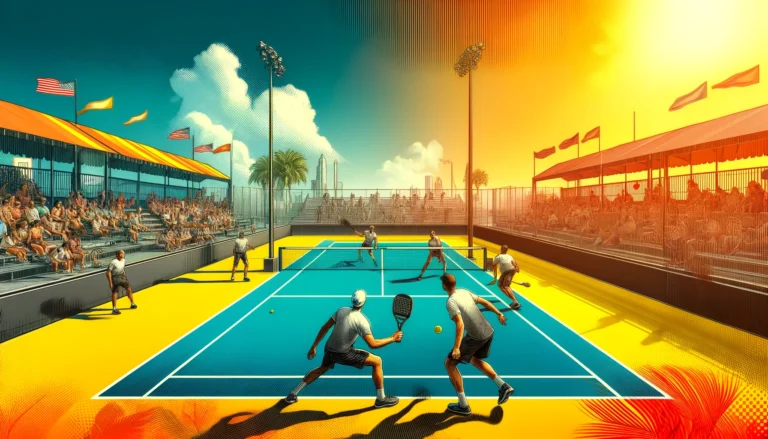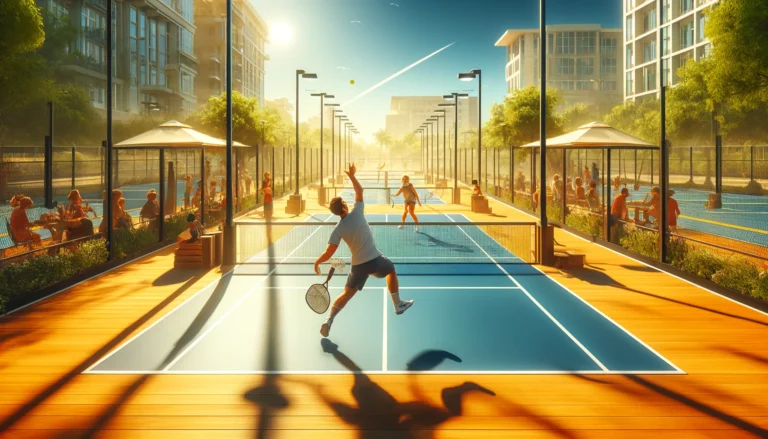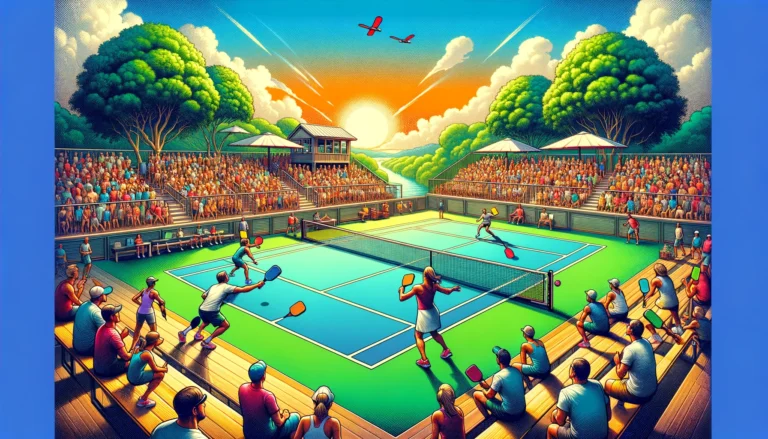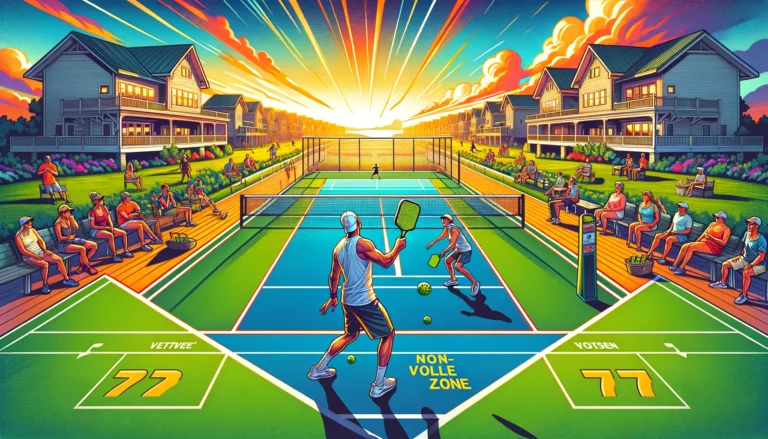Understanding Pickleball Rules Doubles Play (Complete Guide)
Pickleball Rules Doubles Play
Pickleball, a sport that combines elements from tennis, badminton, and table tennis, has been rapidly gaining popularity across the globe. Particularly in doubles play, understanding the specific rules and strategies is crucial for success on the court. In this comprehensive guide, we will dive deep into the pickleball rules for doubles, ensuring players of all levels can enjoy and compete effectively in this dynamic game.
The Basics of Pickleball Doubles Play
Before we get into the specific rules, let’s establish what pickleball doubles play entails. In doubles pickleball, each team consists of two players, and the basic pickleball rules doubles of the game mirror those of singles play but with some key differences that affect strategy and positioning.
Brief Description
In doubles, teamwork and coordination are paramount. Players must work together seamlessly to cover the court and execute strategic plays.
Step-by-Step Guide
- Positioning: Start each point at your service box and switch sides with your partner after scoring a point.
- Serving: Both players on the serving team will take turns serving before the serve transitions to the opposing team.
- Volleys: Communication is key to decide who takes the shot when the ball comes to the center.
Scoring in Pickeball Doubles Play
Scoring in pickleball doubles can be confusing for beginners due to the unique method used in this sport. Understanding how to score correctly is essential to playing the game well and ensuring fair play.
Brief Description
Pickleball uses a sequence-based scoring system, where you must announce the score before each serve. The score announcement includes three numbers: the serving team’s score, the receiving team’s score, and the server number (one or two).
Step-by-Step Guide
- Starting the Game: The team on the right side serves first and continues serving until they commit a fault.
- Point Scoring: Points are only scored by the serving team when the opposing team fails to return the ball or commits a fault.
- Server Sequence: After losing a point on the serve, the serve transitions to the teammate (in the case of the first server’s fault). Once both teammates have lost their serve, the serve goes to the opposing team.
The Double Bounce Rule
The double bounce rule is one of the distinctive aspects of pickleball, and it is crucial in doubles play to keep the game fair and enjoyable for both teams.
Brief Description
This rule requires the ball to bounce once on each side before volleys are allowed. This prevents players from smashing the ball directly off the serve, which could be especially overwhelming in doubles play.
Step-by-Step Guide
- Serve Reception: The receiving team must let the serve bounce once before returning.
- Return: The serving team must also let the ball bounce once after the return before playing it.
- Continuation of Play: After these two bounces, normal volley play can resume where the ball can be either volleyed or played off the bounce.
Faults in Pickleball Doubles
Faults are actions in the game that lead to a loss of a point or a serve. Knowing what constitutes a fault in doubles play is critical to maintaining the flow of the game and ensuring compliance with the rules.
Brief Description
Faults in pickleball doubles include actions such as hitting the ball out of bounds, not clearing the net, and committing foot faults (stepping into the non-volley zone during a volley).
Step-by-Step Guide
- Out of Bounds: Learn the court dimensions and aim your shots within the playing area.
- Net Errors: Practice consistent strokes to ensure the ball clears the net without hitting it.
- Foot Faults: Be mindful of your positioning, especially when near the non-volley zone (also known as the kitchen).
Powerful Conclusion: The Spirit of Doubles Pickleball
As we wrap up this detailed exploration of pickleball rules for doubles, it’s important to reflect on the essence of the sport. Pickleball isn’t just about mastering the rules or perfecting techniques; it’s about the joy of partnership, the excitement of competition, and the shared experience of sport. Whether you’re stepping onto the court for a casual game or preparing for a tournament, the spirit of doubles pickleball lies in the camaraderie and mutual respect among players. Embrace these principles, and you’ll not only improve your game but also enrich your enjoyment of this fascinating sport. Keep these guidelines in mind, practice diligently, and above all, enjoy the unique challenges and rewards that doubles pickleball offers.
Conclusion
Celebrating the Community and Spirit of Doubles Pickleball
As we conclude our comprehensive journey through the rules of doubles pickleball, it’s important to remember why so many people are drawn to this sport. Pickleball isn’t just about competition or maintaining physical fitness; it’s a celebration of community and shared experiences. Playing doubles, in particular, fosters a unique bond between teammates as they strategize, communicate, and grow together on the court.
Doubles pickleball offers a wonderful blend of social interaction and athletic challenge that appeals to players of all ages and skill levels. It requires not only physical coordination but also mental acuity and emotional resilience. The joy of a well-executed play, the thrill of a tight match, and the satisfaction of improving alongside a partner are experiences that go beyond simple game mechanics.
Let this guide be your starting point towards mastering the art of pickleball doubles. Remember, the rules are just the framework; the true spirit of the game lies in how you embrace its challenges and opportunities for growth. Whether you’re a beginner or an experienced player, take these lessons to heart, apply them with passion, and above all, enjoy every moment you spend on the pickleball court. Here’s to countless hours of fun, friendship, and pickleball!

